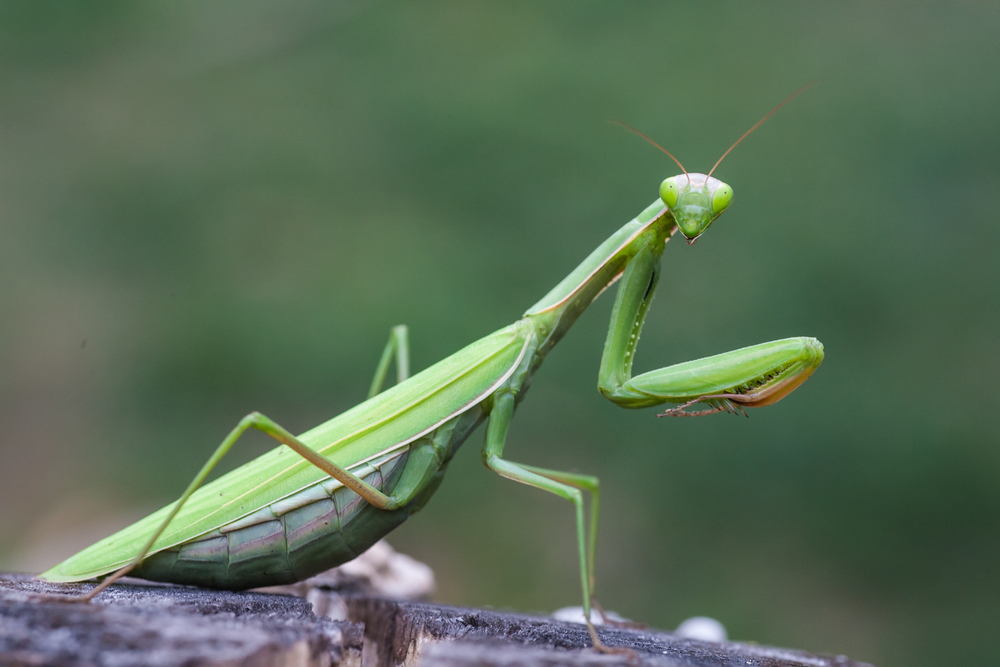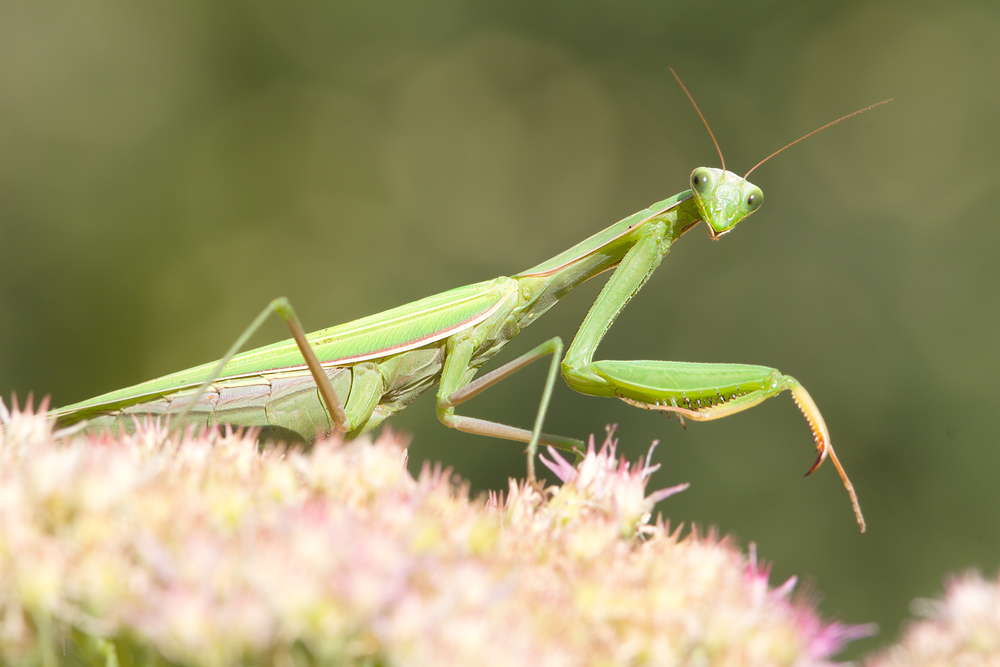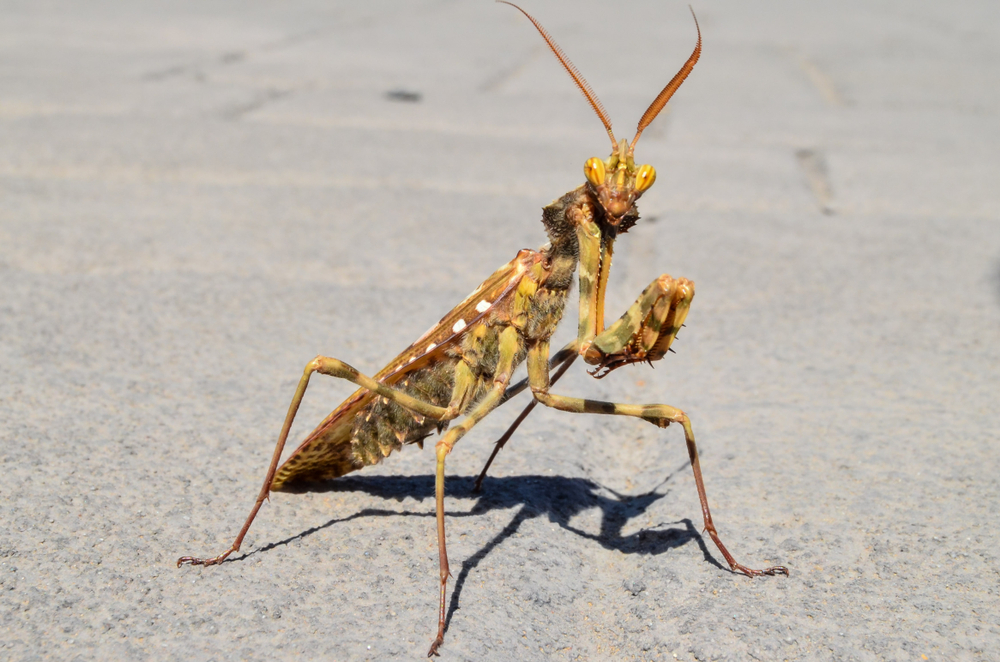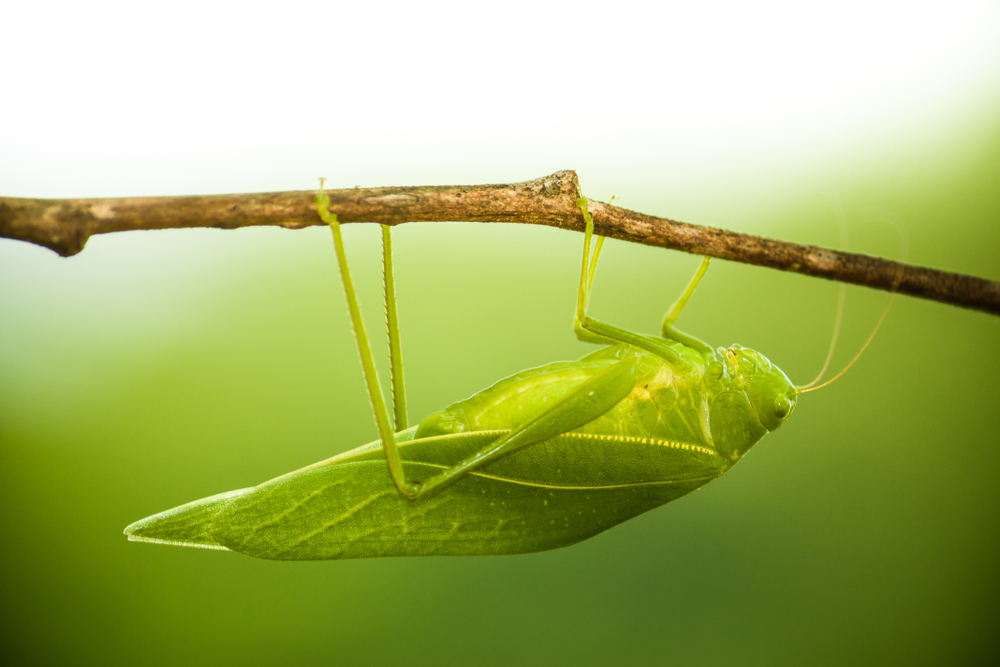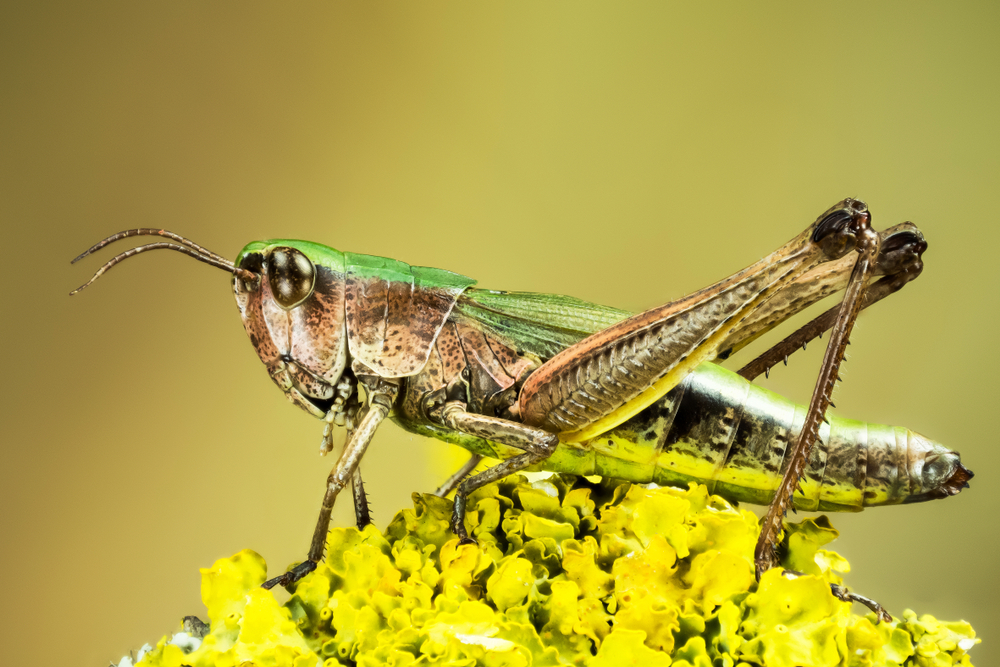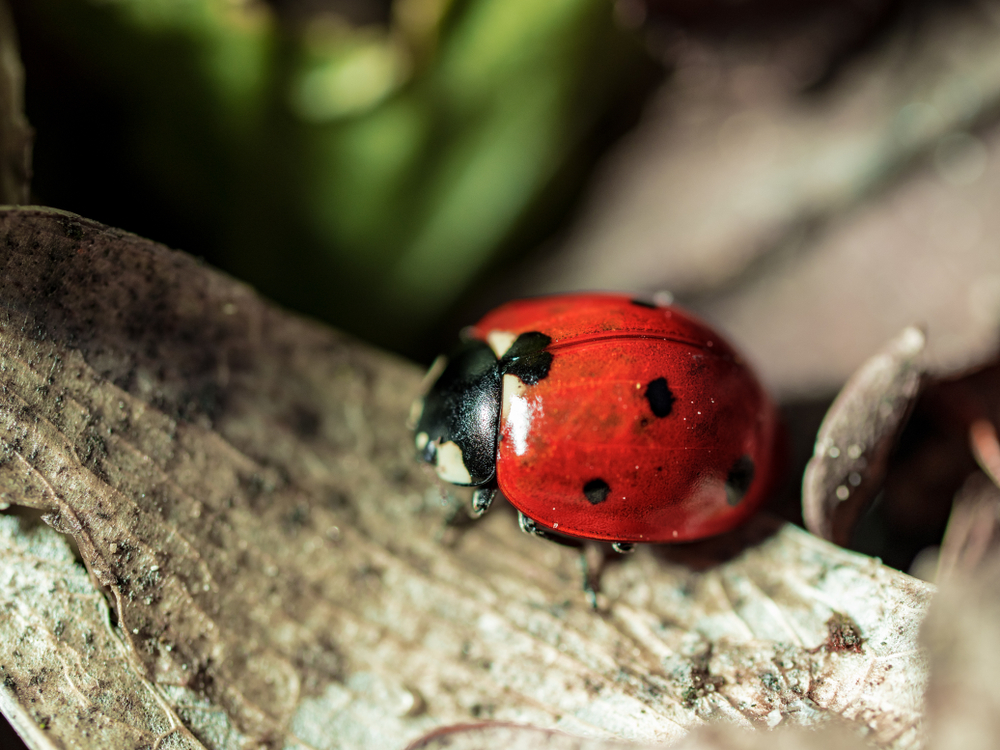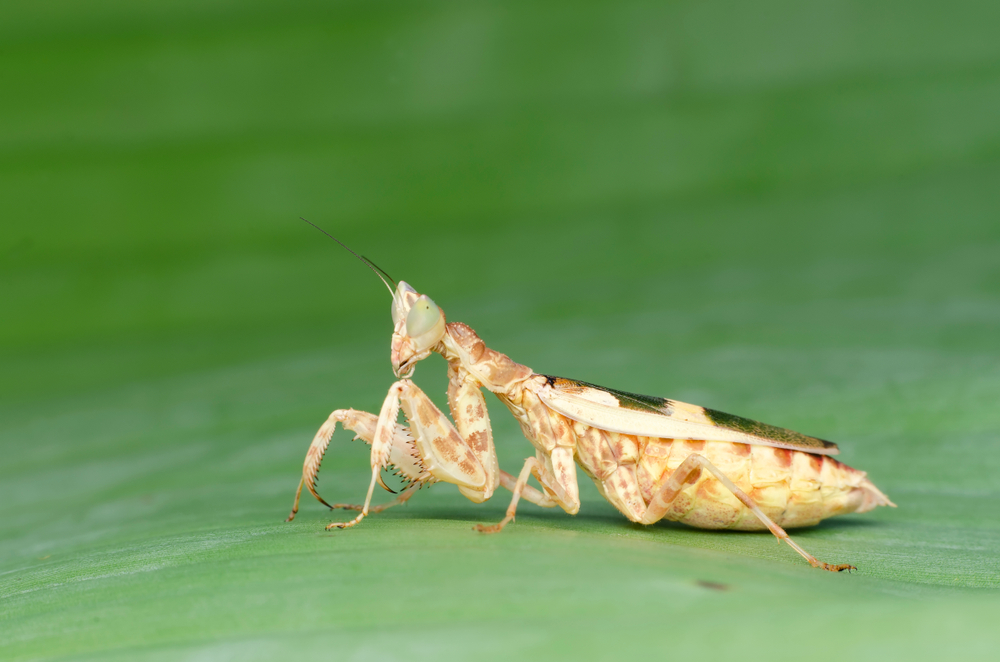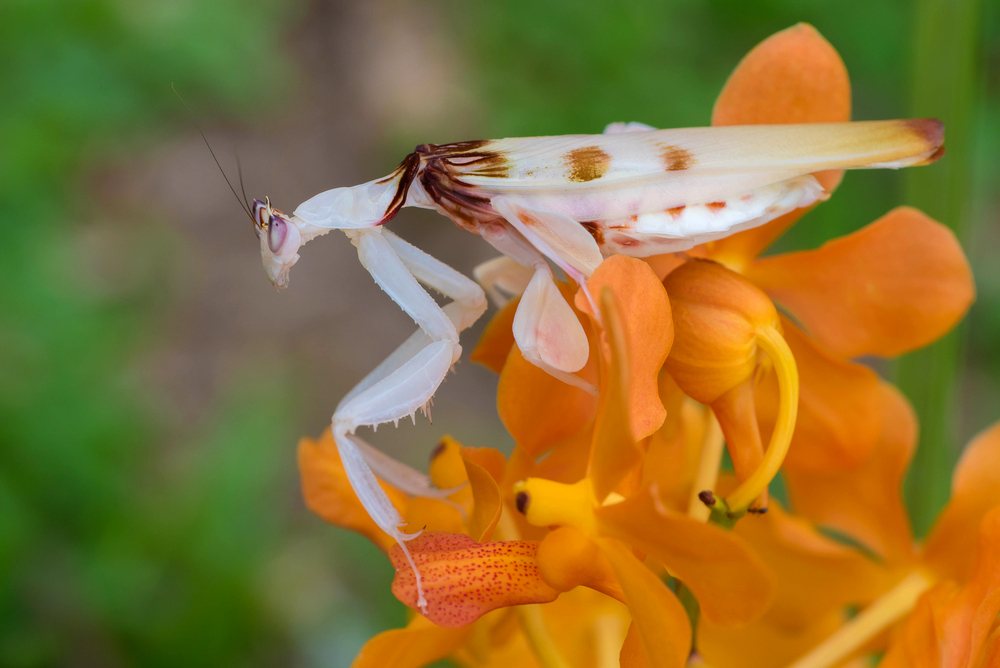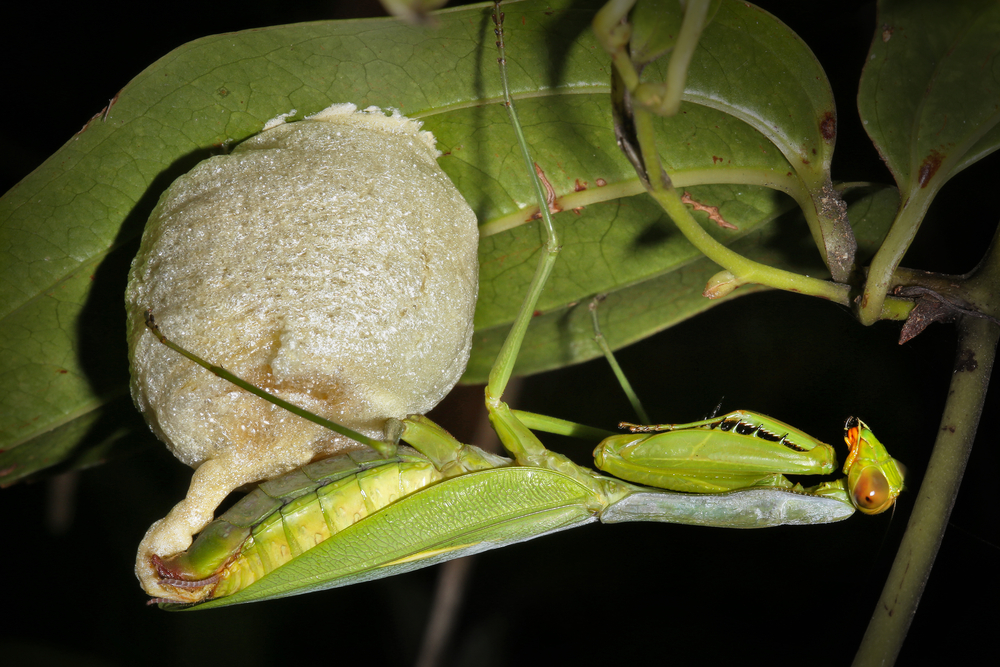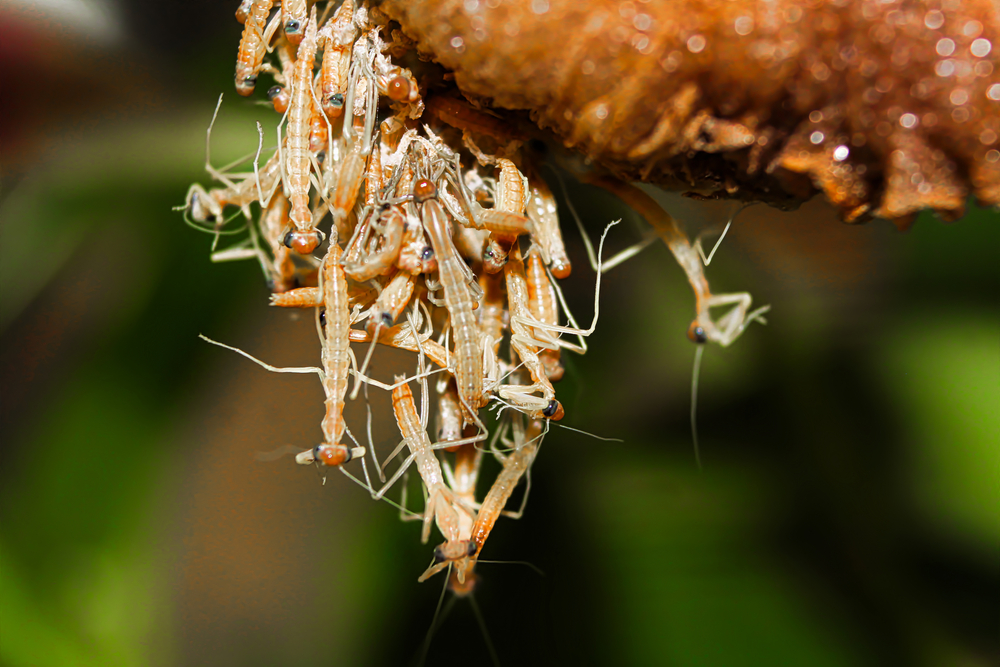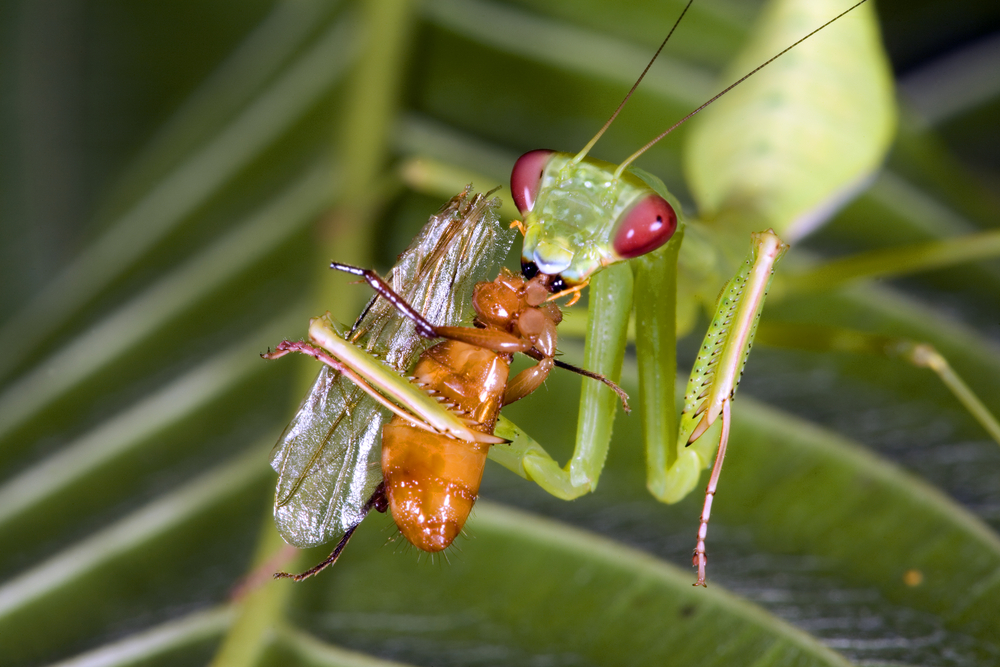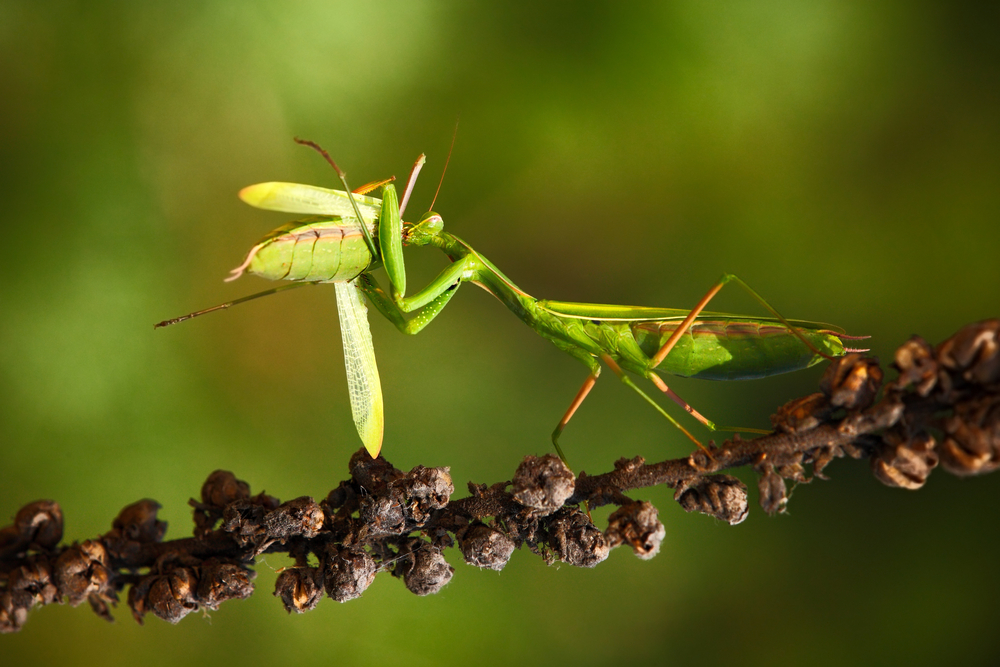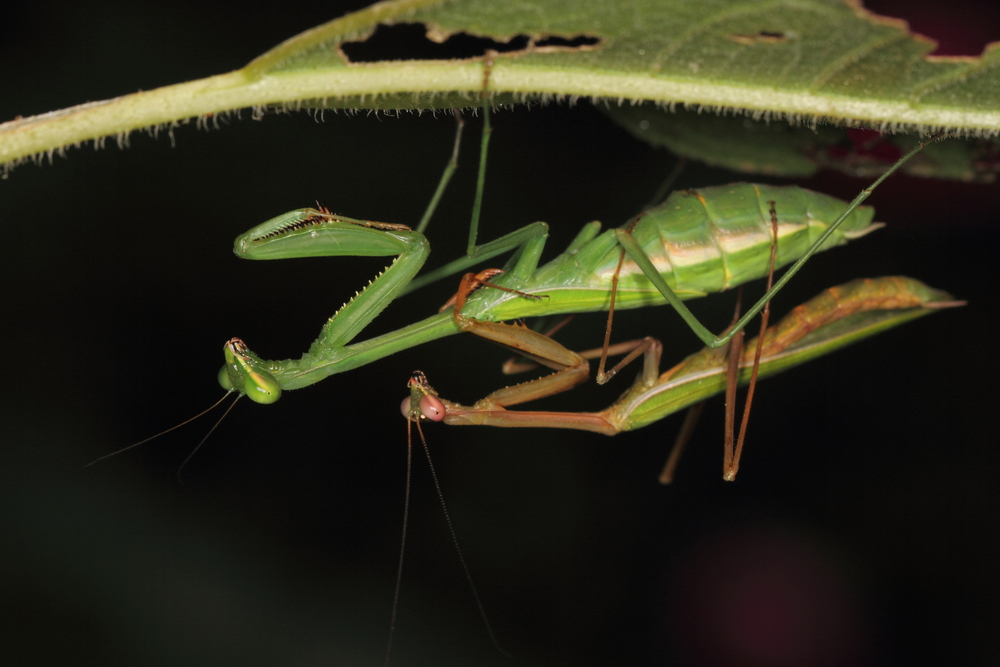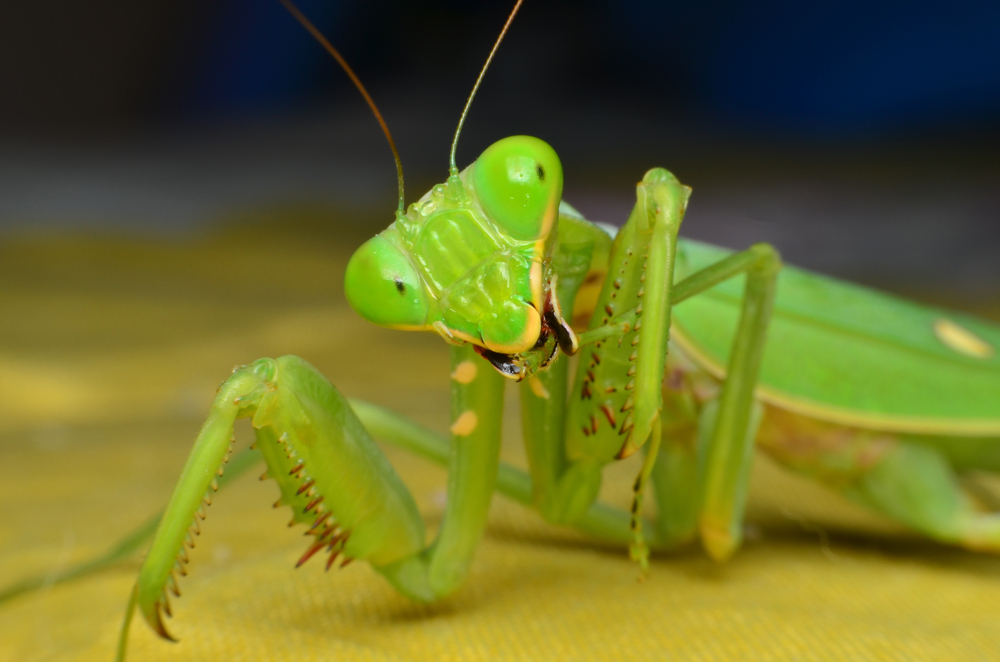There are over 2,400 known species of Praying Mantises (order Mantodea) distributed worldwide. These species vary in size, coloration, and habitat preferences, allowing them to adapt to a wide range of environments and ecological niches. Each species may have its own unique characteristics and behaviors, making the Praying Mantis order one of the most diverse and fascinating groups of insects in the Animal Kingdom.
About
The praying mantis, a captivating and enigmatic insect, belongs to the order Mantodea within the class Insecta, placing it firmly in the vast and diverse Animal Kingdom. As a member of the Insecta class, mantises share characteristic features such as six legs, a segmented body, and an exoskeleton. Mantises are further classified into multiple families and species, each with its unique characteristics and habits.
Praying mantises are renowned for their distinctive appearance, characterized by their elongated bodies, spiked forelimbs, and a head that can pivot nearly 180 degrees, giving them a seemingly attentive, praying posture. Their cryptic coloration, ranging from shades of green and brown to pink and even white, helps them blend seamlessly into their surroundings, making them highly effective ambush predators.
These fascinating insects are voracious hunters, preying on a variety of small arthropods, insects, and even other mantises. Their hunting strategy involves stealth and patience, as they patiently wait for prey to come within striking range before snaring it with their lightning-fast forelimbs.
Mantises play a vital role in ecological systems as both predators and prey. They help regulate insect populations, acting as natural pest control agents. Additionally, their remarkable behaviors, such as elaborate courtship rituals and sexual cannibalism, make them subjects of fascination for scientists and enthusiasts alike.
In this introduction, we’ve touched on the praying mantis’s classification within the Animal Kingdom, its unique physical attributes, and its significance in the natural world as a formidable predator and intriguing insect.
Physical Characteristics
The physical appearance of a praying mantis is distinctive and intriguing:
Appearance:
- Body: Praying mantises have elongated, slender bodies with a thorax and abdomen. Their bodies can vary in color from green to brown, pink, or even white, depending on the species and environment.
- Head: The head of a mantis is triangular and can swivel nearly 180 degrees, giving it exceptional mobility. It features large compound eyes, which provide excellent vision.
- Antennae: Mantises have short, thread-like antennae located between their eyes.
- Legs: They possess six legs, with the front pair modified into powerful, spiky forelimbs used for capturing prey.
- Wings: Most mantises have two pairs of wings. The front wings, called tegmina, are leathery and protect the hind wings, which are membranous. The wings can vary in size and shape among species.
Size:
- Mantises come in various sizes, with different species exhibiting different dimensions.
- On average, adult mantises range from 0.5 to 6 inches (1.3 to 15 centimeters) in length.
Weight:
- The weight of a praying mantis varies depending on its size and species.
- Typically, they weigh between 0.04 ounces (1 gram) to 0.7 ounces (20 grams).
Praying mantises are relatively lightweight insects, but their physical adaptations, such as their swiveling head, specialized forelimbs, and excellent camouflage, make them highly effective hunters in their ecosystems.
Reproduction
The reproductive cycle of a praying mantis is a fascinating and sometimes complex process. Here’s an overview of their reproductive behavior:
Courtship: The reproductive process begins with courtship, where the male mantis approaches the female cautiously. Courtship rituals vary among species but often involve visual displays, tactile interactions, and chemical cues. In some cases, the male offers the female a prey item as a nuptial gift.
Mating: Once courtship is successful, mating occurs. The male transfers sperm to the female’s reproductive tract using a specialized organ called a spermatophore. In some species, the female may consume the male after or during mating, a behavior known as sexual cannibalism, which provides her with additional nutrients.
Egg-Laying: After mating, the female typically searches for a suitable location to lay her eggs. She secretes a foam-like substance that hardens into an egg case or ootheca. Inside the ootheca, she deposits dozens to hundreds of eggs, depending on the species.
Gestation Period: The gestation period for praying mantises is relatively short and can vary based on environmental conditions. It typically lasts several weeks to a few months. During this time, the eggs develop within the ootheca.
Hatching: Once the eggs are fully developed, tiny nymphs hatch from the ootheca. They resemble miniature versions of adult mantises but lack wings and are called nymphs.
Young Mantises: The young mantises emerge from the ootheca and disperse into the environment. They undergo a series of molts as they grow, shedding their exoskeletons to accommodate their increasing size. Each molt is followed by a brief period of immobility and vulnerability.
The number of young mantises hatched from a single ootheca can vary widely based on species and environmental factors. Some oothecae may produce only a few nymphs, while others can yield dozens or more.
Praying mantises exhibit a range of reproductive strategies, and some species have evolved unique behaviors and adaptations to maximize their reproductive success. Sexual cannibalism, where the female consumes the male, is one such adaptation that ensures the female receives additional nutrients while providing a potential reproductive advantage for the male.
Lifespan
The lifespan of a Praying Mantis can vary depending on several factors, including species, environmental conditions, and the availability of food. Here’s a general overview:
In the Wild:
- In their natural habitat, the lifespan of a Praying Mantis typically ranges from several months to about a year, depending on species and environmental conditions.
- Mantises often face various challenges in the wild, including predation, weather conditions, and the availability of suitable food sources. These factors can influence their survival and lifespan.
In Captivity:
- Mantises kept in captivity, such as in insect collections or as pets, can potentially live longer than their wild counterparts.
- Under ideal conditions, some species of mantises may live for up to a year or more in captivity. Providing a suitable environment, a consistent supply of food, and protection from predators can contribute to their extended lifespan.
Biggest Threats: While mantises are skilled predators, they also face threats in both wild and captive environments:
- Predation: Mantises themselves can become prey for birds, larger insects, and small vertebrates.
- Habitat Loss: Destruction of natural habitats due to urbanization and deforestation can reduce their populations by diminishing suitable living spaces.
- Pesticides: Exposure to pesticides in agricultural and urban areas can harm mantises directly or indirectly by reducing their prey availability.
- Cannibalism: Mantises are known for their cannibalistic behavior, and in captivity, they may sometimes eat each other, especially if they are overcrowded or stressed.
- Disease: Like all living creatures, mantises can be susceptible to diseases that can impact their health and lifespan.
In conclusion, the lifespan of a Praying Mantis varies but is generally limited to several months to a year, with potential variations based on species and environmental conditions. Threats to mantises include predation, habitat loss, pesticides, cannibalism, and diseases, highlighting the challenges they face in both wild and captive environments.
Eating Habits
Praying Mantises are renowned for their carnivorous and predatory eating habits. They are skilled hunters that primarily feed on a variety of live prey. Here’s an overview of their eating habits and hunting techniques:
Prey Selection:
- Mantises are opportunistic predators and will consume a wide range of insects and other small invertebrates. Their diet can include flies, moths, crickets, grasshoppers, beetles, and even other mantises.
- Some larger mantis species are known to capture small vertebrates such as frogs, lizards, and even small birds, although this is less common.
Hunting Technique:
- Mantises are ambush predators, relying on stealth and camouflage to stalk and capture their prey.
- They often wait patiently in vegetation, perched on leaves or branches, and use their excellent vision to detect movement.
- When potential prey comes within striking distance, mantises employ their lightning-fast front legs to grasp and immobilize the prey.
- Mantises are known for their “praying” posture, where they hold their front legs in a folded position, ready to strike in an instant.
Feeding Behavior:
- Once they capture prey, mantises begin feeding while the prey is still alive. They typically start by consuming softer, more accessible parts of the prey, such as the head or thorax.
- Mantises have specialized mouthparts that allow them to chew and devour their prey.
- While feeding, mantises can rotate their heads nearly 180 degrees, giving them a wide field of view to monitor their surroundings for potential threats.
Cannibalism:
- One notable aspect of mantis behavior is cannibalism. In some cases, female mantises may cannibalize their male counterparts during or after mating. This behavior is not universal among all mantis species but occurs in some instances.
In summary, Praying Mantises are carnivorous predators that capture a variety of live prey using their stealth, camouflage, and lightning-fast front legs. They feed on insects and other small invertebrates, and some larger species can even tackle small vertebrates. Their hunting technique and behavior make them fascinating subjects for study and observation in the wild and captivity.
Uniqueness
The Praying Mantis is a unique insect in several fascinating ways:
- Distinctive Appearance: Praying Mantises are instantly recognizable by their elongated bodies, triangular heads, and prominent front legs adapted for capturing prey. Their appearance sets them apart from most other insects.
- Predatory Prowess: Mantises are skilled and agile hunters, equipped with lightning-fast front legs that they use to grasp and immobilize prey. Their hunting technique is unparalleled in the insect world.
- Camouflage Masters: Many mantis species exhibit excellent camouflage, blending seamlessly into their natural environments with green or brown coloration. This camouflage helps them ambush unsuspecting prey and avoid predators.
- Unusual Head Movement: Mantises can rotate their heads nearly 180 degrees, giving them an exceptional range of vision without having to move their bodies. This unique ability aids in spotting prey and potential threats.
- Cannibalistic Mating: In some species, female mantises are known to practice sexual cannibalism, where they consume the male after or during mating. This behavior has garnered significant attention in scientific studies.
- Egg Protection: Female mantises often deposit their eggs in protective cases called oothecae. These cases safeguard the eggs from predators and environmental hazards until they hatch.
- Incomplete Metamorphosis: Mantises undergo incomplete metamorphosis, which means they do not have a pupal stage like many other insects. Instead, they progress from egg to nymph to adult, resembling miniature adults even in the early stages.
- Cultural Significance: Mantises hold cultural significance in various societies and have been featured in folklore, art, and literature, often symbolizing different qualities such as patience, focus, and mysticism.
- Ecological Role: Praying Mantises play a crucial ecological role by helping to control insect populations, acting as natural pest controllers in agricultural and natural ecosystems.
- Global Distribution: Mantises are found on almost every continent, showcasing their adaptability to diverse environments and their widespread presence in the natural world.
These unique characteristics collectively make the Praying Mantis a captivating and revered insect, admired for its predatory prowess, intriguing behavior, and cultural significance in different societies.
FAQ’s
1. How many types of Praying Mantis are there?
2. What are some of the most popular species of Praying Mantis?
Certainly, here are 10 popular species of Praying Mantises along with brief descriptions:
- European Mantis (Mantis religiosa): Found in Europe and North America, it’s green or brown with a triangular head and a habit of swaying.
- Chinese Mantis (Tenodera sinensis): Large and green, this species is native to Asia and has become common in North America.
- Giant Asian Mantis (Hierodula membranacea): Recognizable by its size and vibrant green color, this species is native to Southeast Asia.
- Orchid Mantis (Hymenopus coronatus): Resembling a flower petal, it camouflages among orchids to ambush prey in Southeast Asia.
- Ghost Mantis (Phyllocrania paradoxa): Native to Africa, its leaf-like appearance provides excellent camouflage among foliage.
- African Stick Mantis (Popa spurca): Resembling a stick or twig, it’s found throughout Africa and adapts to its environment.
- Devil’s Flower Mantis (Idolomantis diabolica): Named for its intimidating appearance, it’s native to Africa and showcases remarkable mimicry.
- Shield Mantis (Choeradodis rhomboidea): Known for its shield-like appearance, this species is found in Central and South America.
- Spiny Flower Mantis (Pseudocreobotra wahlbergii): A small but striking species with spines, native to Africa.
- Budwing Mantis (Parasphendale affinis): Noted for its unique bud-like wings, it’s native to Southeast Asia and is relatively small.
These species exemplify the diversity in appearance and behavior seen in Praying Mantises worldwide, making them captivating subjects for insect enthusiasts and researchers.
Related Family Species
Sources
- Britannica, Praying Mantis, https://www.britannica.com/animal/mantid, retrieved January 2024.
- Burnie, David & Wilson, Don, Animal, Smithsonian Institute, Washington DC.
- Hickman et al, Integrated Principle of Zoology, McGraw Hill, Boston.






























































